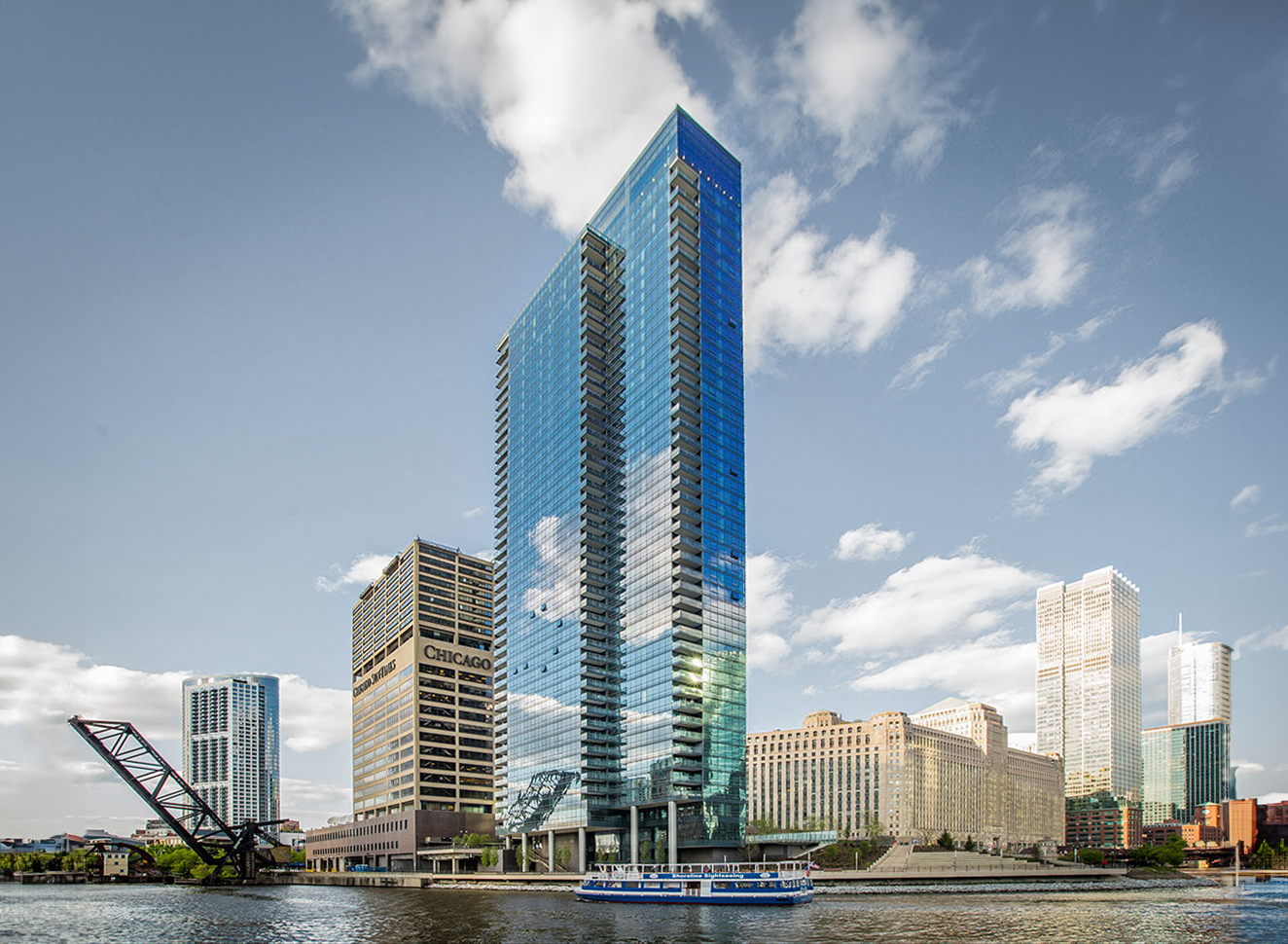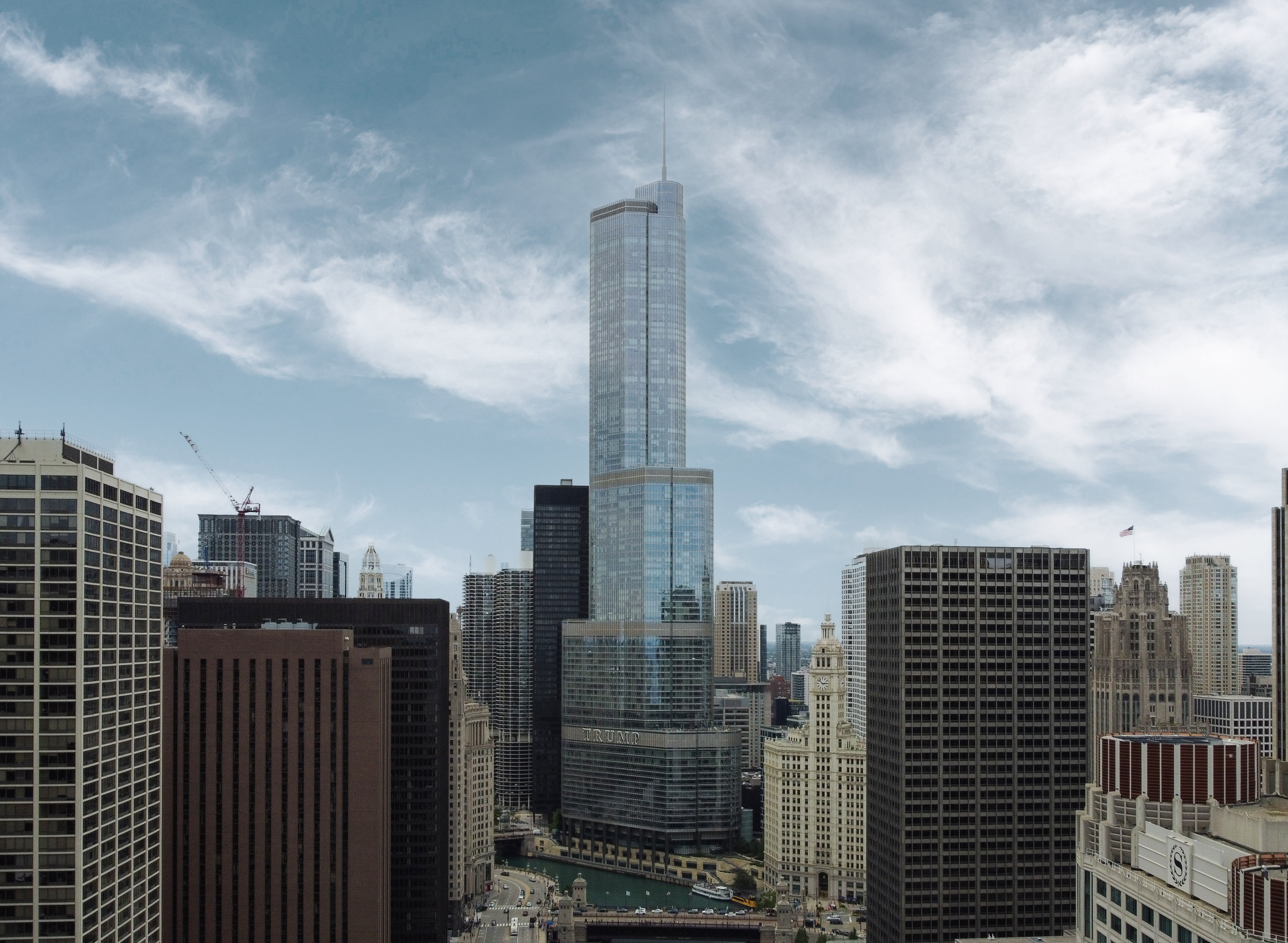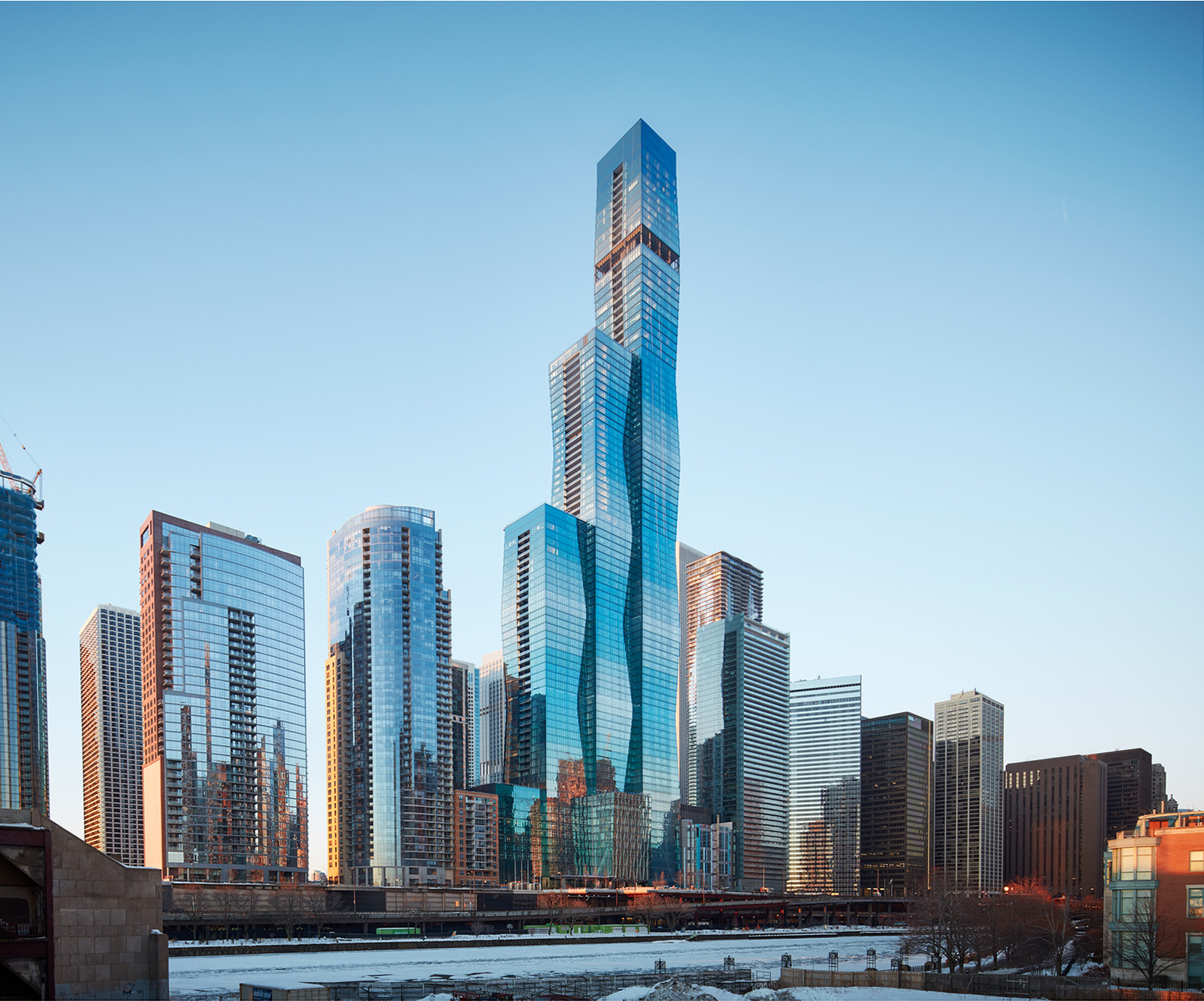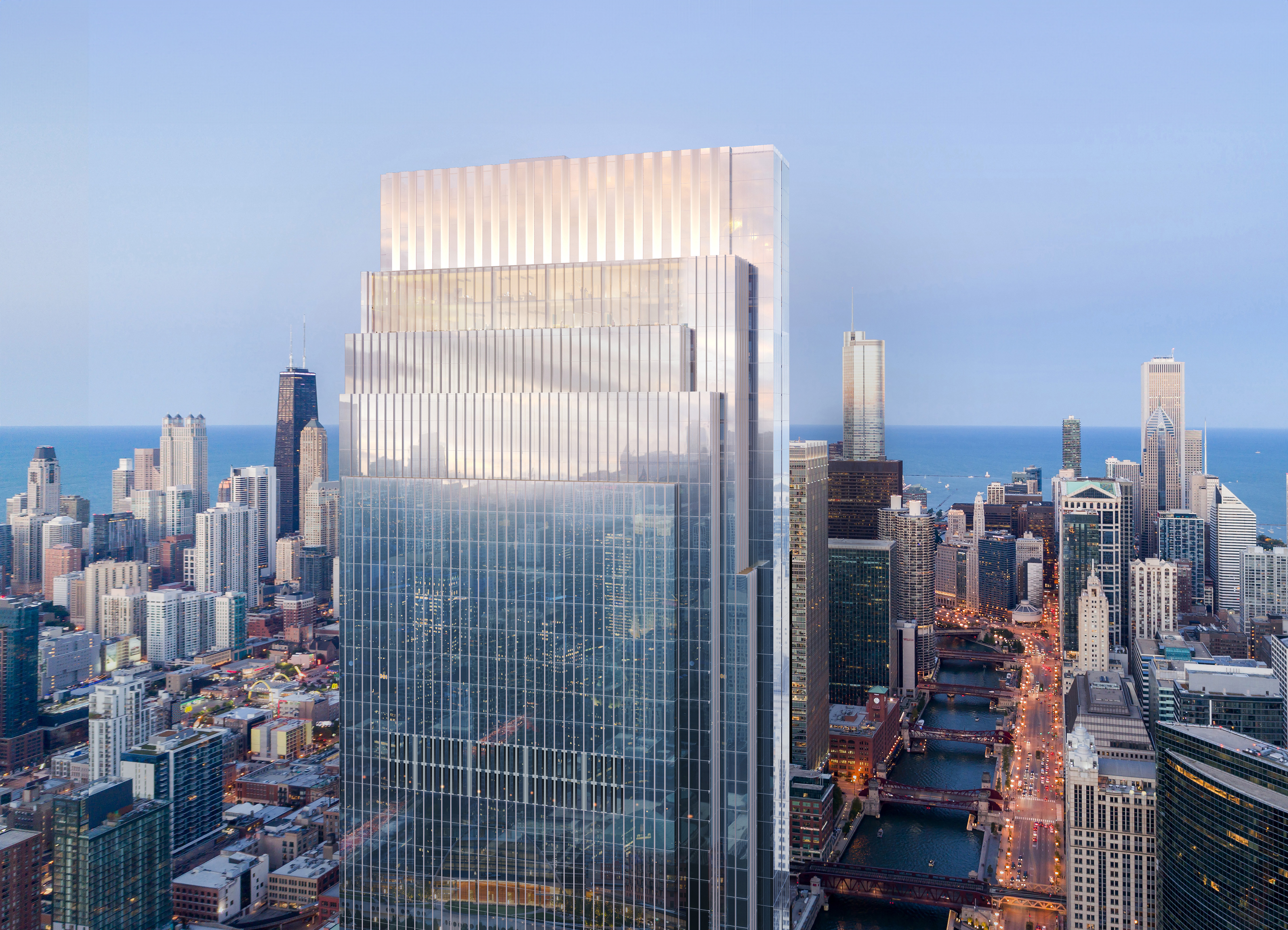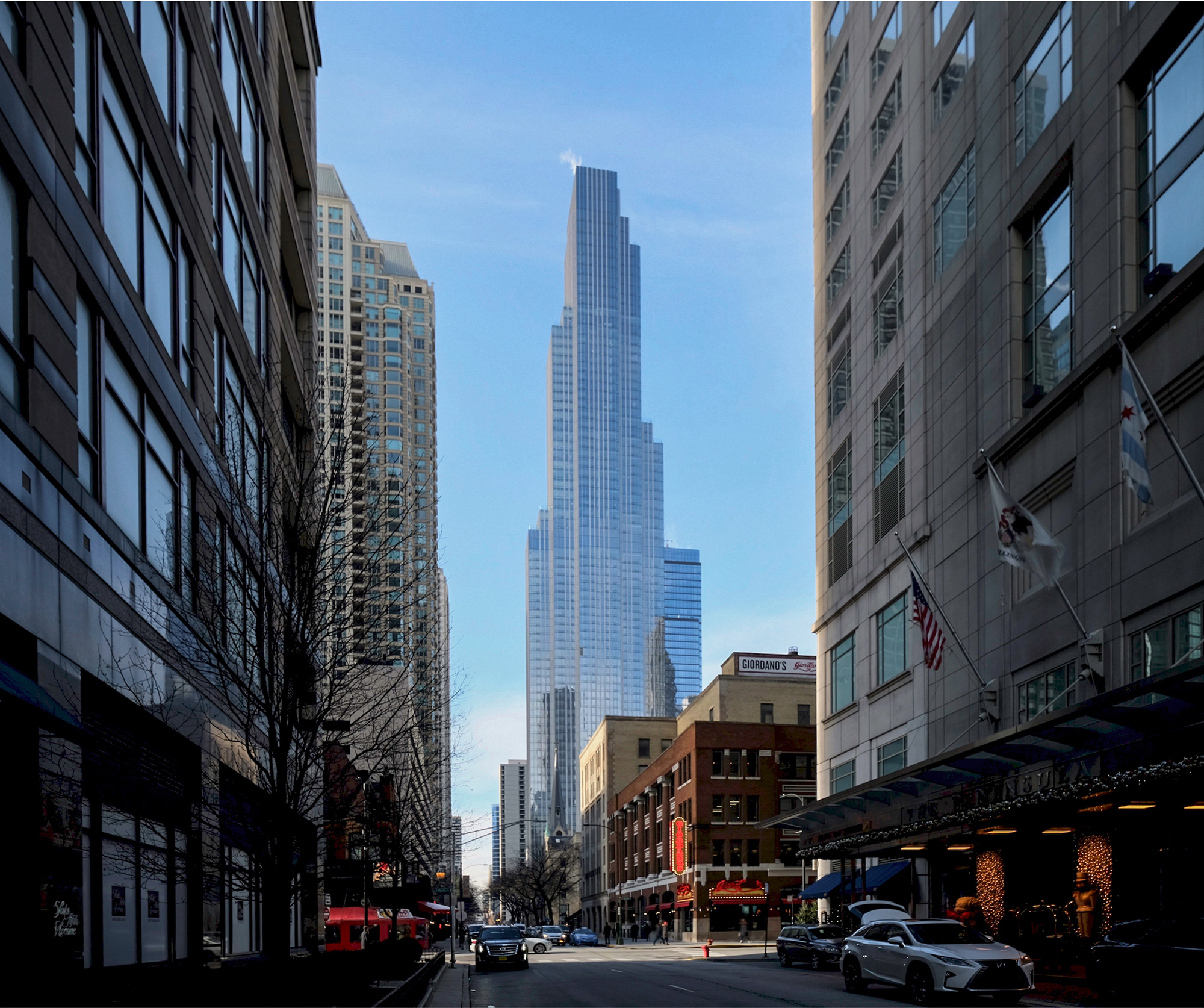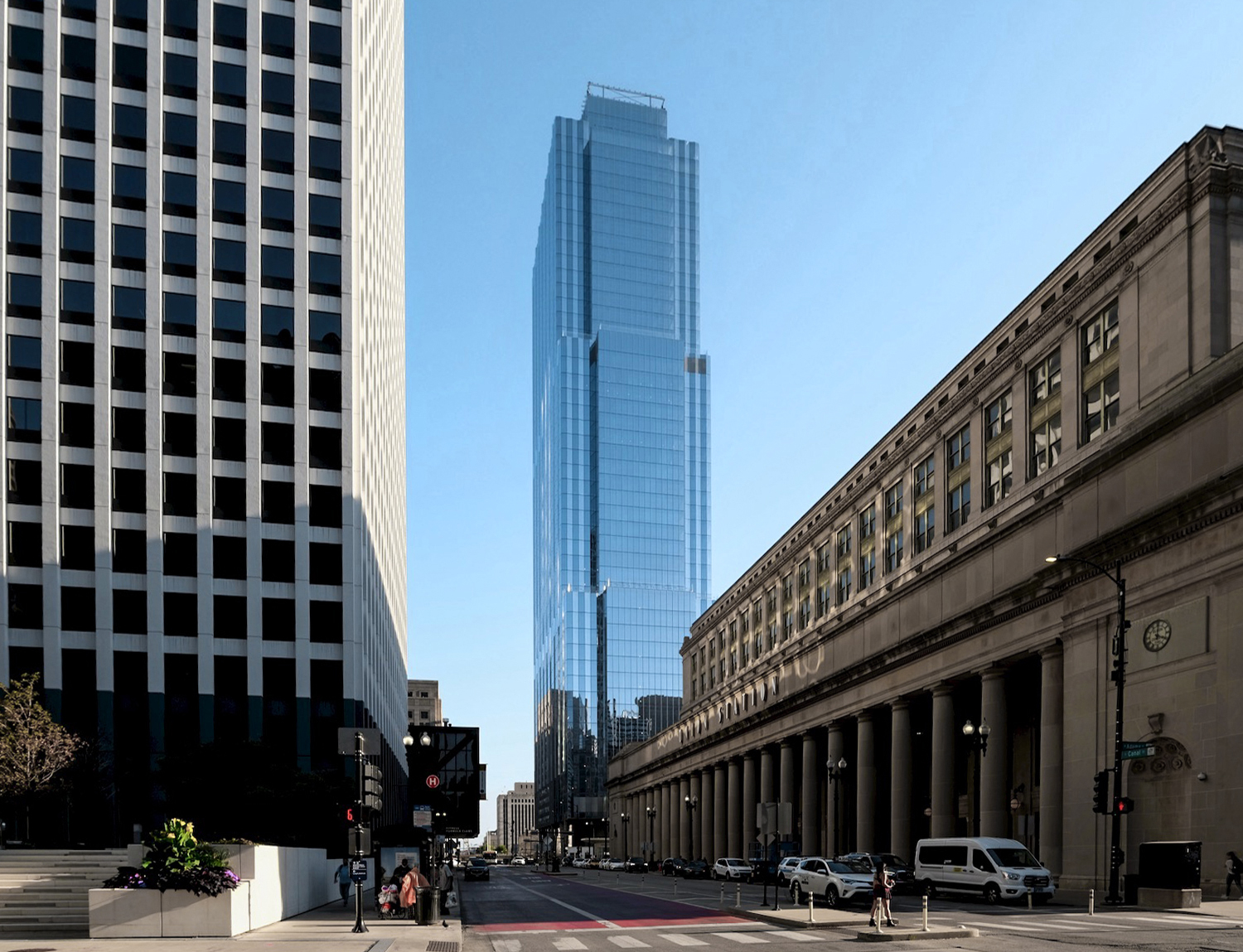The Wolf Point West Tower is a Contemporary skyscraper designed between 2012 and 2014 by bKL Architecture, and built between 2014 and 2016 in Chicago, IL.
Its precise street address is 343 West Wolf Point Plaza, Chicago, IL. You can also find it on the map here.
The Wolf Point West Tower has received multiple architecture awards for its architectural design since 2016. The following is a list of such prizes and awards:
- NAIOP Chicago Award in 2017
- CISCO Project of the Year award New Construction in 2016
Wolf Point is the area located at the confluence of the North, South, and Main Branches of the Chicago River, and is a historically significant site in Chicago's early development, ad it hosted the city's first taverns, hotel (Sauganash Hotel), ferry, drug store, church, theater company, and river bridges.
The Wolf Point West Tower is part of a redeveloped that took place in the 2010's, which also included the Wolf Point East Tower, and the Salesforce Tower later on.
